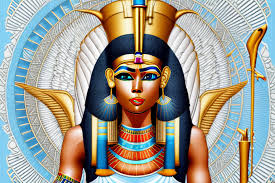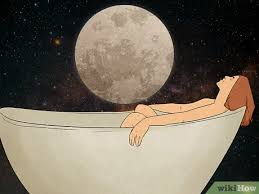Do you think you know about the moon? Do you even care about the moon?
In our day to day lives, we rarely take time to look upward at the heavens. The sun rises and sets without any fanfare and the moon is paid little attention with its constant presence in the sky out shined by the sun. But there was a time in history when the MOON MATTERED.
The Next Full Moon is Thursday morning, Oct. 17, 2024, at 7:26 a.m. EDT and it's a Supermoon; the Hunter's Moon; the Travel Moon, the Dying Grass Moon, or the Sanguine or Blood Moon; the start of Sukkoth; Sharad Purnima, Kumara Purnima, Kojagari Purnima, Navanna Purnima Kojagrat Purnima, or Kaumudi Purnima; the end of Vassa and Pavarana; the Thadingyut Festival Moon; the end of the Phaung Daw U Pagoda Festival; and Vap Poya.
According to the Royal Museums Greenwich, the “Hunter's Moon” was named by Native Americans, so named because it gives hunters longer periods of night with which to stalk prey during the fall months. All of the names for this particular moon and related festivals/celebrations would make one believe this moon is special. But this will be the third of four consecutive supermoons (and the brightest by a tiny margin).
The moon has always been viewed and painted in poetry as mysterious. Adding to the mystery of moons is the fact this supermoon is in the month when little ones and adults dress up as ghost, witches, and goblins. Did you know that the word lunatic comes from the Latin luna, because it was believed that people were more likely to exhibit aberrant behavior during a full moon? For many Pagans, the cycles of the moon are important to magical workings. It's believed in some traditions that the waxing moon, the full moon, the waning moon and the new moon all have their own special magical properties.
Inevitably, sometimes controversially, the moon is associated with fertility, and many believe the moon's influence over love, sex, and reproduction is part of a rhythm seen in the natural world. Does a supermoon make you super sexy, super desirable, or super sexy? Maybe we should be paying more attention to the moon.
When the moon waxes, life is said to grow and abundance is present, whereas desire diminishes during its waning cycle. In New Zealand, Maori myth says that a young girl named Rona displeased the Moon so that he seized her and took her far away to him. Grabbing a tree, she dragged it with her, the tree symbolizing fertility.
In the above folklore, the moon is depicted as male, while in the majority of myths the moon is referred to as female. The moon is a feminine symbol, universally representing the rhythm of time as it embodies the cycles. The phases of the moon symbolize immortality and eternity, enlightenment or the dark side of Nature herself. The Moon is generally thought of as feminine; due to the connection between its phases and a woman's monthly cycles (that's where the term 'menstrual' comes from). As the average length of women's menstrual cycles matches the moon's 29.5-day waxing and waning cycle.
Isis is the moon goddess in Egyptian culture. N"Game is the moon goddess of West Africa. Her name translates to “the shining one.” N’Game was known for creating all of the heavenly bodies. Chang'e, is the moon goddess of China. She was married to Hou Yi, an archer and emperor. Cerridwen, commonly referred to as the dark moon goddess is the Celtic goddess of the underworld. She is the keeper of the cauldron of knowledge. Artemis is the Greek goddess of the moon, hunting, archery and midwifery. Selene is the goddess of the moon in Greek mythology. Hecate is the moon goddess of magic, witchcraft, the night, ghosts, necromancy and of course, the moon. In the Mayan folklore, Ixchel translates to rainbow woman; she is the goddess of the moon, love, gestation, medicine and textile arts. There are many more moon goddesses, too many to name here.
Not only does the moon hold myth and mystery, but it has also crossed into our expressions. The expression "once in a Blue Moon" is derived from the rarity of the event, as it is a second full moon in a calendar month, occurring only every two to three years. There are also many people who incorporate the phases of the moon into spiritual practices and moon bathe.
A moon bath is a ritual that involves immersing oneself in the moon's energy during specific phases of the moon. It's a spiritual practice that's believed to help people connect with nature, find balance, and improve their overall well-being. Moon bathing was an ancient Indian practice that involved going outside and standing or laying under the moonlight to benefit from its healing properties. Instead of going outside like ancient Indians, today's moon bathers prefer the privacy of the warm waters of their bathtub, along with bath salts, candles, essential oils, and soothing music.
Many cultures believe the moon possesses the ability to cleanse and reset, making it a significant time for rituals and wishes. One popular belief is that wishes made under a full moon have a higher chance of coming true. People create "moon water" by leaving a glass container filled with water under the moon's light overnight, believing that it becomes charged with the moon's energy and can be used for various purposes.
In the Philippines, it is believed that no marriage should take place except during the period of the full moon, as good fortune comes only during that period. There’s also the superstition that exposing your newborn to the waxing moon will give the baby strength. Meanwhile, the Irish believe viewing the new moon through glass should be avoided, and that even the position of the new moon is important; for luck the new moon should be seen over the right shoulder, never the left.
No matter whether you pay the gray heavenly body any attention or not these days, it continues to maintain its magic and allure. No romantic evening is complete without a full shining moon and twinkling stars. Farmers no longer rely solely on the phases or stages of the moon for planting, but modern science and weather forecasts. The goddesses have long fell out of favor and few superstitions/myths remain. But the moon is always glorious. Just look up tonight.
And with the airwaves and internet flooded with politics, you may find some relief from the negative energy by going out tonight under the beautiful full Hunter's Moon and soaking up some moon rays to rid yourself of the negative energy. The chances are slim you will turn into a werewolf as many believed in the past happened during a full moon. But it is the month of ghosts and goblins, who knows what may happen.
Here are a few more beliefs about the moon.
The first time you see a crescent moon for the month, take all your spare coins out of your pocket, and put them in the other pocket. This will ensure good luck for the next month.
Some people believe that the fifth day after a full moon is the perfect time to try to conceive a child.
In some Chinese religions, offerings are made to the ancestors on the night of a full moon.
In some Native American legends, the moon is held captive by a hostile tribe. A pair of antelope hope to rescue the moon and take it the village of a good tribe, but Coyote, the trickster, interferes. The antelope chase Coyote, who tosses the moon into a river each night, just out of reach of the antelope.
The night of the full moon is believed to be a good time for divination and scrying.
It is unlucky to have a full Moon on Sunday.
It is unlucky to see the first sliver of a new Moon through a window; you'll break a dish. And it's certainly unlucky to sleep in the
It is unlucky to point at the new Moon or view any Moon over your shoulder.












No comments:
Post a Comment